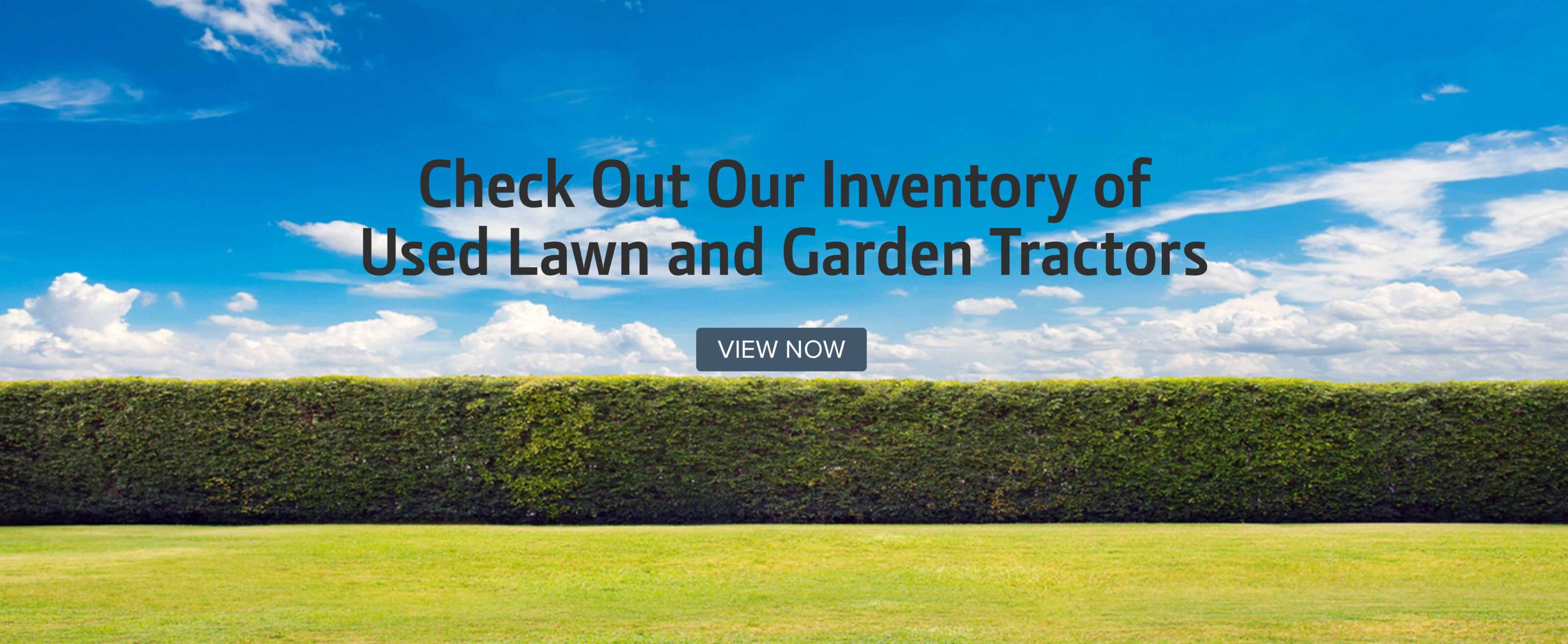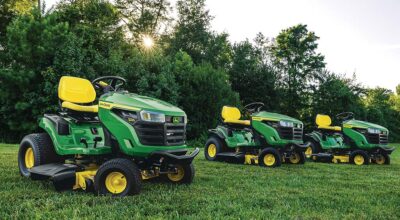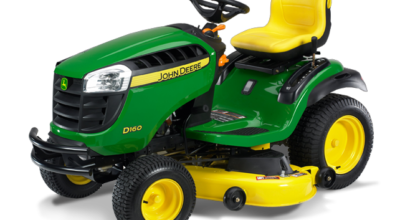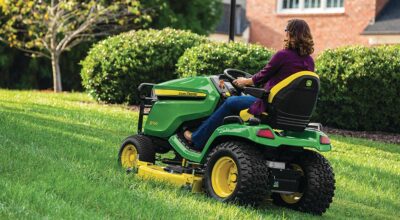Spring is finally here, and for most across the country, this brings about the opportunity to tackle that yard work that has been piling up over the past few months. As with any task, though, home and landowners should kick off their spring lawn care regimen by going over the basics and deciding on the John Deere lawn tractor models that will be best suited for their operation. While this may seem like a lot to consider, home and landowners can rest assured knowing that the work they put in at the beginning of the season will pay off for months, maybe even years, to come.
By taking steps early in the season, home and landowners will be able to enjoy a pristine, lush lawn rather than having to worry if the grass will ever get back to normal, even now that winter is over. Below are steps and considerations that will lead to the perfect lawn each year.
How to Get Ready for Spring Lawn Care: 5 Essential Steps
As we get into spring, most are finally starting to experience warm weather, making the transition from winter easier each day. That said, sometimes your lawn needs a bit of help to move past the days of freezing temperatures and into the days when it is able to grow without issue. While everybody’s lawn is different and has different areas of focus, there are certain considerations with lawn care that everybody should consider before hopping on their John Deere lawn tractor for the first time each spring.
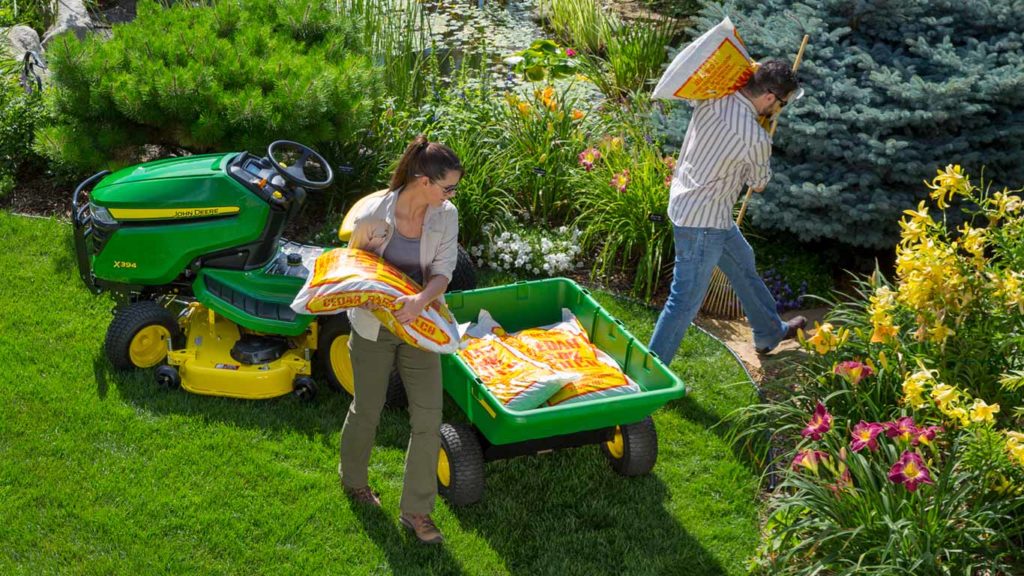
1. Test the pH Level of Your Soil
When it comes to maintaining a healthy lawn, chemistry might play a bigger role than one would think. As is the case for the growth of any crop or plant, homeowners should think about their geographical location before determining the conditions that are best for creating the ideal environment for their grass.
2. Manage Your Thatch Level
Thatch is the layer of decomposed plant material that lies underneath the green vegetation of each lawn. While a small layer of thatch can offer benefits, too much of it can bring about insects and diseases that can impact the health of one’s lawn, inhibiting grass growth. For those lawns that need to be dethatched, homeowners should use an aerator that gives the soil better access to oxygen and water.
3. Don’t Forget to Fertilize
Once the aerator has created holes in the ground for oxygen, water, and nutrients to reach the soil, it is time to serve the fertilizer. Fertilization replenishes the reserves used by the soil during the winter, meaning it plays a critical role in spring lawn care. When choosing a fertilizer, homeowners should consider their soil’s pH levels and natural conditions before applying with a John Deere spreader.
4. Take Care When Mowing
Prior to starting up their John Deere lawn tractor for the first time of the season, operators should check to make sure their grass is dry to the touch and at least 3-4 inches tall. Once the mowing begins, no more than ⅓-inch of the grass length should be cut. The horticulture experts at Kansas State University explain that while mowing lower than normal at the start of spring is okay, it is best to raise the deck back to normal after the first couple of mowings to discourage crabgrass and encourage deep rooting. By taking this into consideration, homeowners can kick off their season right.
5. Don’t Underestimate the Power of Grass-Cycling
While it may be tempting, homeowners should not throw away the grass clippings that have been scattered about their yard after the lawn has been cut. Just leave them be! Grass clippings left behind break down in less than two weeks and act as a manure supplement or fertilizer. This is known as “grass-cycling” because it reduces the amount of yard waste in landfills while also providing immense benefits to your lawn.
What Are the Best John Deere Lawn Tractor Models?
Now that we have gone over the basics of transitioning one’s lawn from winter to spring, we will run through another, if not the most important, consideration – choosing a John Deere lawn tractor. There are several John Deere lawn tractors that have stood out throughout the years, including the LA105 and the F525, thanks to a range of features that are key to a great-looking property. With so many options to choose from, though, it can be difficult to decide which model is right for you.
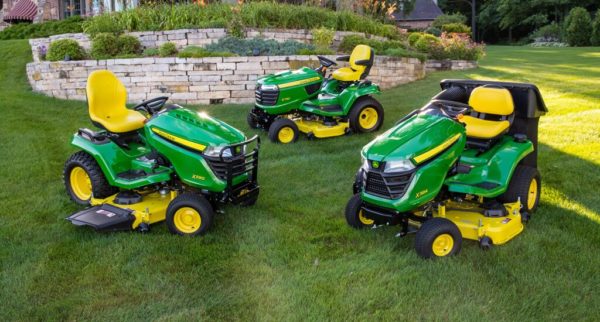
What Should I Look for When Buying a Riding Lawn Mower?
Before making any purchasing decisions, operations should ask themselves the following questions before buying a lawn tractor:
How Large is the Area that I am Mowing?
In order to make sure they can get the most out of their equipment, homeowners must take the size of their property into account – this will impact the features they want and the level of horsepower they’ll need.
What Size of Mower Deck Do I Want?
A riding lawn mower with a larger cutting width and more horsepower will typically help get the job done faster. On the other hand, smaller mowers allow operators to work in more constrained areas with limited access, such as backyards that are obstructed by narrow gates that larger mowers cannot fit through.
How Many Obstacles Will I Need to Mow Around?
The more obstacles within a space, the tighter an operator’s turning radius will need. John Deere mowers with All Wheel Steer (AWS) tend to have a smaller turning radius that helps homeowners cut grass faster with fewer twists and turns.
What Type of Terrain Will I Be Facing on a Regular Basis?
Having an understanding of one’s terrain will be critical in deciding how much horsepower they need. While homeowners who work on flat, less challenging terrain can choose a tractor with the least amount of horsepower, those who work with slopes and hills will require a tractor with more horsepower and added stability.
Will I Need My Lawn Tractor for Anything Other than Mowing?
Most John Deere lawn tractors can perform various tasks with the right attachment. By deciding what the primary use of their equipment will be – whether it be cutting the lawn or transporting materials – operators can choose the best attachments for the job.
What Are the Available John Deere Lawn Tractor Models?
Considering the number of options and factors that operators must consider, we have assembled a John Deere lawn tractor comparison chart, broken down by series and model, to help you on your way to a pristine yard.
100 Series Lawn Tractors
Manufactured in Greeneville, Tennessee, the 100 Series takes the hassle out of yard work. These 2-wheel drive models feature an ergonomic operator station with an adjustable seat so you can always ride your turf smoothly. Designed for residential yards and light hauling, the John Deere 100 Series tractors help create an easy-to-use experience every time.
Below are specifications for current models within this series, including the E100, E110, E120, E130, E140, E150, E160, E170, and E180.
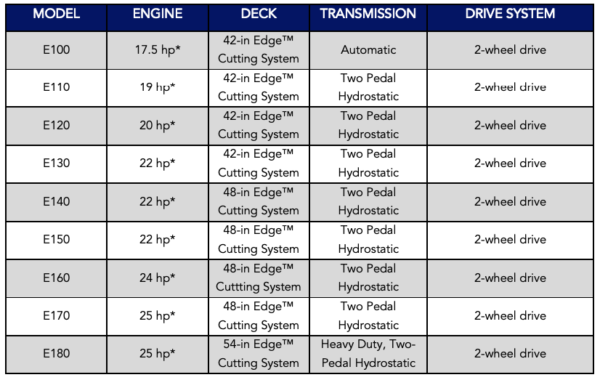
Want to learn more about the John Deere tractor models in the 100 Series? Check out this video gallery!
S240 Lawn Mower
The John Deere S240 is designed to make any lawn the envy of the entire neighborhood. With two-pedal forward/reverse foot controls for ease of use, Turf Trac tires that reduce lawn scuffing and steering effort, and deep mower-deck stamping for enhanced mower capacity, this piece of equipment will provide a precise cut every time.
Below are the specifications for the current S240 models.

X300 Select Series
Models in the X300 Select Series are designed to take any lawn to the next level. With exclusive One-touch MulchControl™ technology, three different Accel Deep™ Mower Deck sizes, and a range of attachments to choose from, these lawn tractors ensure that homeowners can get the most out of their lawns.
Below are specifications for current models within this series, including the X330, X350, X350R, X354, X370, X380, X384, X390, and X394.
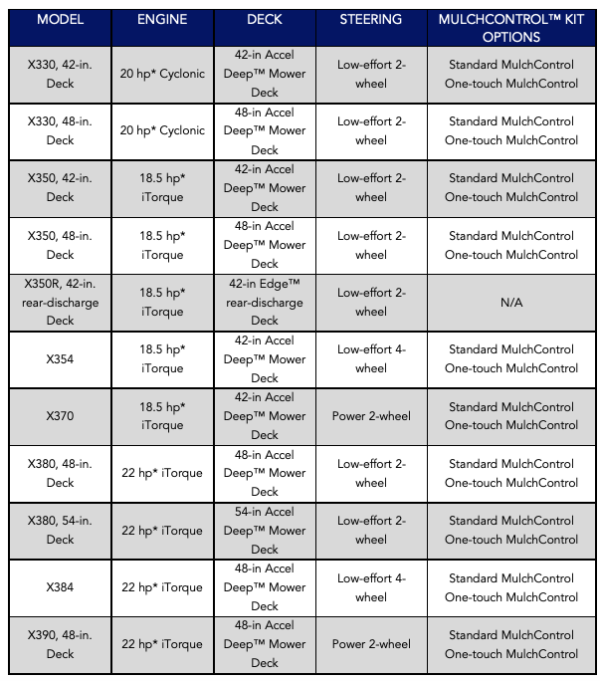

X500 Select Series
Models in the X500 Select Series are perfect for yards with complex landscaping features or challenging terrain. With two different Accel Deep™ Mower Deck sizes and a number of X500 attachments to utilize, these John Deere lawn tractors are designed to power through any condition.
Below are specifications for current models within this series, including the X570, X580, X584, and X590.
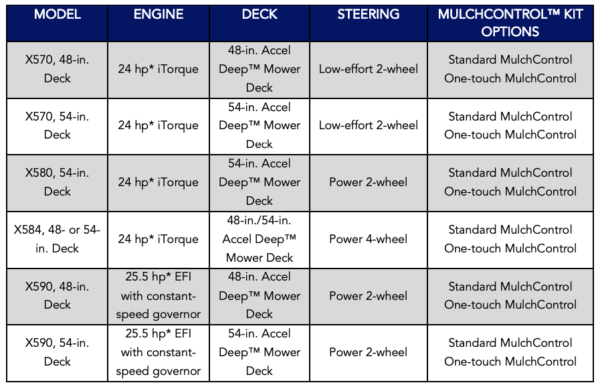
X700 Signature Series
The John Deere X700 Signature Series features several models that allow operators to complete a wide variety of tasks around the yard, including loader and landscaping work. With Accel Deep™ and High-capacity mower decks and the ability to connect heavy-duty attachments, homeowners can rest assured knowing that their lawn care efforts will pay off.
Below are specifications for current models within this series, including the X730, X734, X738, X739, X750, X754, and X758.
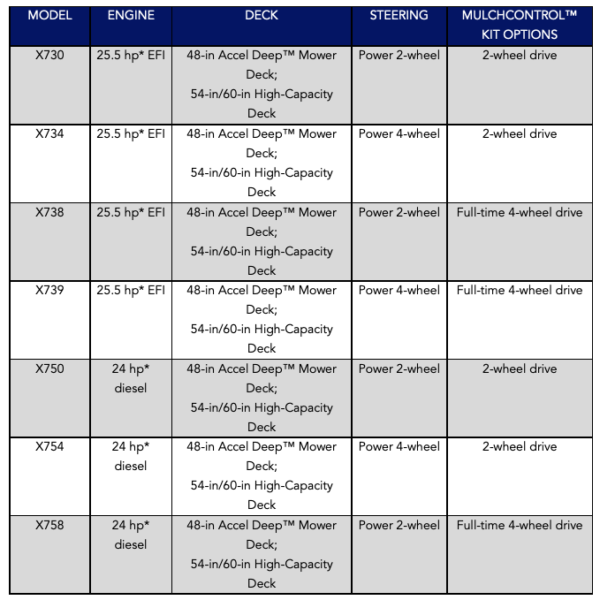
Check out our Twitter fan media gallery to see these John Deere lawn tractors in action!
What Are the Available John Deere Lawn Tractor Models Attachments?
Considering the variety of lawn tractors John Deere offers, it is no surprise that operators can also choose from a range of attachments to enhance the cut quality of their equipment further. While some John Deere lawn tractor attachments are specific to certain models, several options are available that work for all of the series noted above.
Attachments for Improving Lawn Health
Attachments for Improving Lawn Appearance / Cleanup
- Striping Kit
- Material Collection System
- Mulch Kit
- Weights
- Lawn Sweeper
- Deck Leveling Gauge
Gardening Attachments
Maximize Your Lawn This Spring with John Deere Lawn Tractors
As the weather warms up, people can finally get outside and spend some much-needed time in their yards. By taking the appropriate steps and finding the John Deere lawn tractor that is right for them, there is no doubt that homeowners will get their lawns looking good as new in no time.
If you have any questions about John Deere lawn care equipment, you can contact your local John Deere dealer.
If you enjoyed this post or want to read others, feel free to connect with us on Facebook, Pinterest, or Twitter!
